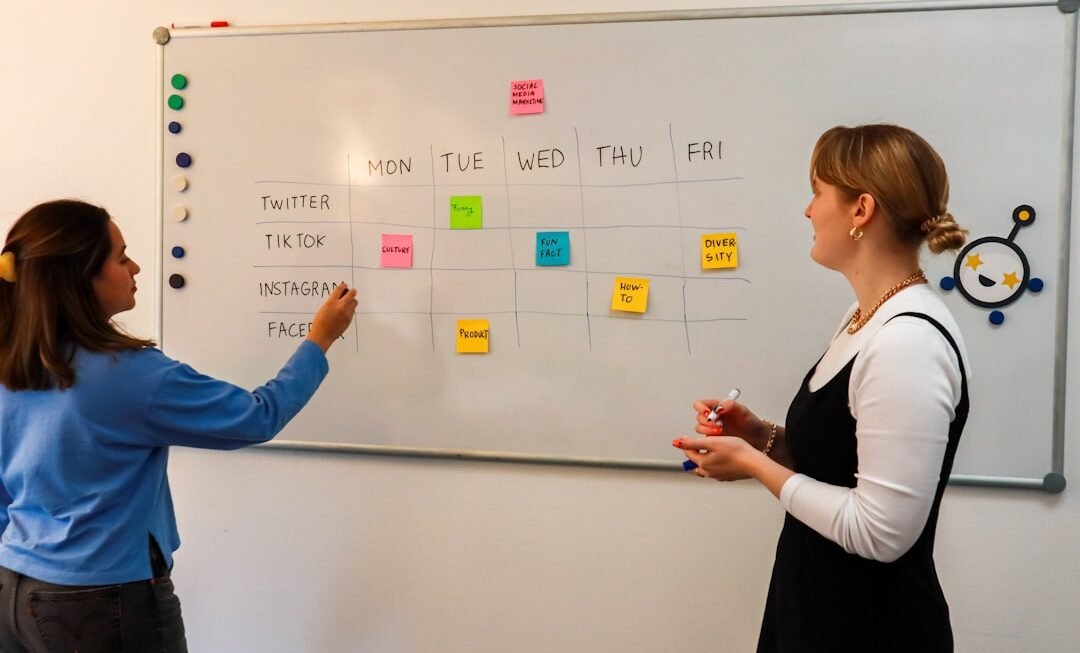Microlearning is an educational approach that delivers content in small, easily digestible units, allowing learners to engage with material in a more focused and efficient manner. This method capitalizes on the principles of cognitive science, particularly the idea that the human brain can only process a limited amount of information at one time. By breaking down complex subjects into bite-sized pieces, microlearning facilitates better understanding and retention.
Typically, these learning modules can range from a few seconds to about ten minutes, making them ideal for busy individuals who may struggle to find time for traditional, longer learning sessions. The mechanics of microlearning are rooted in its flexibility and accessibility. It can take various forms, including videos, infographics, quizzes, podcasts, and interactive simulations.
This diversity allows educators to cater to different learning styles and preferences. For instance, a visual learner might benefit from an infographic summarizing key concepts, while an auditory learner may prefer a short podcast discussing the same material. The adaptability of microlearning not only enhances engagement but also encourages learners to revisit content as needed, reinforcing their understanding over time.
The Benefits of Microlearning in Online Education
One of the most significant advantages of microlearning in online education is its ability to increase learner engagement. Traditional educational formats often struggle to maintain the attention of students, especially in an online environment where distractions abound. Microlearning addresses this challenge by providing short bursts of content that are easier to consume and more appealing to learners.
This format encourages active participation, as students can quickly complete modules and immediately apply what they have learned. Additionally, microlearning promotes self-directed learning. In an online education setting, learners often have varying levels of motivation and commitment.
Microlearning empowers students to take control of their educational journey by allowing them to choose when and how they engage with content. This autonomy fosters a sense of ownership over their learning process, which can lead to increased motivation and better outcomes. Furthermore, the modular nature of microlearning enables learners to revisit specific topics as needed, reinforcing their understanding and mastery of the material.
How Microlearning Enhances Knowledge Retention and Application
Research in cognitive psychology suggests that information retention is significantly improved when learners engage with material in smaller increments. Microlearning leverages this principle by allowing students to focus on one concept at a time, reducing cognitive overload and enhancing comprehension. When learners are presented with information in manageable chunks, they are more likely to internalize the material and recall it later when needed.
Moreover, microlearning encourages the application of knowledge through immediate practice opportunities. Many microlearning modules incorporate interactive elements such as quizzes or scenario-based exercises that require learners to apply what they have just learned. This active engagement not only solidifies understanding but also helps learners connect theoretical concepts with real-world applications.
For example, a microlearning module on effective communication might include a role-playing exercise where students practice their skills in a simulated environment, reinforcing their learning through practical experience.
Incorporating Microlearning into Online Course Design
Integrating microlearning into online course design requires careful planning and consideration of the overall learning objectives.
For instance, if a course on digital marketing includes a section on social media strategies, educators might create a series of microlearning modules focusing on different platforms, each lasting no more than five minutes.
Additionally, course designers should consider the sequencing of microlearning modules to ensure a logical progression of knowledge. By organizing content in a way that builds upon previous lessons, educators can create a cohesive learning experience that guides students through increasingly complex topics. Incorporating assessments at the end of each module can also help reinforce learning and provide immediate feedback, allowing students to gauge their understanding before moving on to the next topic.
The Role of Microlearning in Personalized Learning Paths
Personalized learning paths are becoming increasingly important in online education as they cater to individual learner needs and preferences. Microlearning plays a crucial role in this approach by allowing educators to tailor content delivery based on students’ unique learning styles and paces. For instance, some learners may grasp concepts quickly and prefer to move through modules at an accelerated rate, while others may require additional time and support.
By utilizing microlearning, educators can create adaptive learning experiences that respond to student performance in real-time. For example, if a learner struggles with a particular topic, the system can recommend additional microlearning modules focused on that area before allowing them to progress further. This targeted approach not only enhances knowledge retention but also fosters a more supportive learning environment where students feel empowered to take charge of their education.
Microlearning and the Rise of Mobile Learning
The proliferation of mobile devices has transformed the landscape of education, making learning more accessible than ever before. Microlearning aligns perfectly with this trend, as its short, focused content is ideally suited for consumption on smartphones and tablets. Learners can engage with educational material anytime and anywhere, whether they are commuting, waiting in line, or taking a break at work.
Mobile learning through microcontent also allows for just-in-time training, where learners can access information precisely when they need it. For instance, a healthcare professional might use a mobile microlearning module to quickly review protocols before performing a procedure. This immediacy not only enhances knowledge application but also supports continuous professional development in fast-paced environments where time is often limited.
Overcoming Challenges in Implementing Microlearning in Online Education
Despite its many advantages, implementing microlearning in online education is not without challenges. One significant hurdle is ensuring that content remains relevant and engaging across various formats. Educators must invest time and resources into creating high-quality microlearning modules that resonate with learners while effectively conveying essential information.
This requires ongoing collaboration between subject matter experts and instructional designers to ensure accuracy and relevance. Another challenge lies in measuring the effectiveness of microlearning initiatives. While traditional assessments may not always capture the nuances of knowledge retention achieved through microcontent, educators must develop innovative evaluation methods that reflect student progress accurately.
This could involve using analytics tools to track engagement metrics or incorporating formative assessments that provide insights into learner comprehension throughout the course.
Microlearning and the Future of Online Education
As online education continues to evolve, microlearning is poised to play an increasingly prominent role in shaping its future. The demand for flexible, personalized learning experiences is growing among students who seek efficient ways to acquire new skills and knowledge. Microlearning’s adaptability makes it an ideal solution for meeting these demands while accommodating diverse learning preferences.
Furthermore, advancements in technology will likely enhance the capabilities of microlearning platforms. Artificial intelligence and machine learning could enable even more personalized learning experiences by analyzing student data to recommend tailored content based on individual performance and preferences. As these technologies develop, they will further solidify microlearning’s position as a cornerstone of modern online education.
Case Studies: Successful Implementation of Microlearning in Online Education
Numerous institutions have successfully integrated microlearning into their online education programs, demonstrating its effectiveness across various fields. For example, the University of Illinois at Urbana-Champaign implemented microlearning modules within its online MBA program to enhance student engagement and retention rates. By breaking down complex business concepts into short videos and interactive quizzes, the university reported improved student performance and satisfaction levels.
Another notable case is Duolingo, a language-learning platform that utilizes microlearning principles extensively. The app delivers language lessons in bite-sized chunks that users can complete within minutes while incorporating gamification elements to maintain engagement. Duolingo’s success has highlighted how effective microlearning can be when designed with user experience in mind.
Measuring the Effectiveness of Microlearning in Online Education
To assess the effectiveness of microlearning initiatives in online education, educators must employ various evaluation methods that capture both quantitative and qualitative data. One approach involves tracking completion rates for microlearning modules alongside learner performance on assessments related to those modules. High completion rates coupled with strong assessment scores can indicate that students are effectively engaging with the material.
Additionally, gathering feedback from learners through surveys or focus groups can provide valuable insights into their experiences with microlearning content. Understanding how students perceive the relevance and effectiveness of these modules can help educators refine their approach and make necessary adjustments for future iterations.
Tips for Creating Engaging Microlearning Modules for Online Education
Creating engaging microlearning modules requires careful consideration of both content and delivery methods. First and foremost, educators should focus on clarity and conciseness when developing material; each module should have a clear objective that aligns with overall course goals. Using simple language and avoiding jargon will help ensure that learners can easily grasp key concepts.
Visual aids like infographics or videos can further enrich the learning experience by catering to different learning styles while breaking up text-heavy content. Finally, providing opportunities for learners to apply their knowledge through real-world scenarios or case studies will reinforce understanding and promote long-term retention of information.
By following these guidelines, educators can create effective microlearning modules that not only enhance student engagement but also contribute significantly to overall learning outcomes in online education settings.












